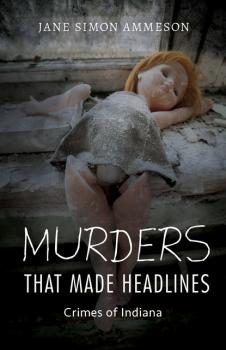ТОП просматриваемых книг сайта:
Биографии и Мемуары
Различные книги в жанре Биографии и Мемуары, доступные для чтения и скачиванияАннотация
<P>In 2009, Samieh Hezari made a terrible mistake. She flew from her adopted home of Ireland to her birthplace in Iran so her 14-month-old daughter, Rojha, could be introduced to the child’s father. When the violent and unstable father refused to allow his daughter to leave and demanded that Samieh renew their relationship, a two-week holiday became a desperate five-year battle to get her daughter out of Iran. If Samieh could not do so before Rojha turned seven, the father could take sole custody—forever. The father’s harassment and threats intensified, eventually resulting in an allegation of adultery that was punishable by stoning, but Samieh—a single mother trapped in a country she saw as restricting the freedom and future of her daughter—never gave up, gaining inspiration from other Iranian women facing similar situations. As both the trial for adultery and her daughter’s seventh birthday loomed the Irish government was unable to help, leaving Samieh to attempt multiple illegal escapes in an unforgettable, epic journey to freedom. Trapped in Iran is the harrowing and emotionally gripping story of how a mother defied a man and a country to win freedom for her daughter.</P>
Аннотация
<P>Alona Frankel was just two years old when Germany invaded Poland. After a Polish carpenter agreed to hide her parents but not her, Alona's parents desperately handed her over to a greedy woman who agreed to hide her only as long as they continued to send money. Isolated from her parents and living among pigs, horses, mice, and lice, Alona taught herself to read and drew on scraps of paper. The woman would send these drawings to Alona’s parents as proof that Alona was still alive. In time, the money ran out and Alona was tossed into her parents’ hiding place, at this point barely recognizing them. After Poland’s liberation, Alona’s mother was admitted to a terminal hospital and Alona handed over to a wealthy, arrogant family of Jewish survivors who eventually cast her off to an orphanage. Despite these daily horrors and dangers surrounding her, Alona’s imagination could not be restrained. A powerful testament to the resilience of the human spirit, Girl is the story of a young girl’s self-preservation through a horrible war and its aftermath. Faithful to the perspective of the heroine herself, Frankel, now a world renowned children’s author and illustrator, reveals a little girl full of life in a terrible, evil world.</P>
Аннотация
<P>For nearly seven decades, Jane Blaffer Owen was the driving force behind the restoration and revitalization of the town of New Harmony, Indiana. In this delightful memoir, Blaffer Owen describes the transformational effect the town had on her life. An oil heiress from Houston, she met and married Kenneth Dale Owen, great-great-grandson of Robert Owen, founder of a communal society in New Harmony. When she visited the then dilapidated town with her husband in 1941, it was love at first sight, and the story of her life and the life of the town became intertwined. Her engaging account of her journey to renew the town provides glimpses into New Harmony’s past and all of its citizens—scientists, educators, and naturalists—whose influence spread far beyond the town limits. And there are fascinating stories of the artists, architects, and theologians who became part of Blaffer Owen’s life at New Harmony, where, she says, "My roots could sink deeply and spread."</P>
Аннотация
It seems there is no genre of writing Marie NDiaye will not make her own. Asked to write a memoir, she turned in this paranoid fantasia of rising floodwaters, walking corpses, eerie depictions of her very own parents, and the incessant reappearance of women in green. Just who are these green women? They are powerful (one was NDiaye’s disciplinarian grade-school teacher). They are mysterious (one haunts a house like a ghost and may be visible only to the author). They are seductive (one stole a friend’s husband). And they are unbearably personal (one is NDiaye’s own mother). They are all, in their way, aspects of their creator, at once frightening, menacing, and revealing of everything submerged within the consciousness of this singular literary talent. A courageous, strikingly honest, and unabashedly innovative self-portrait, NDiaye’s kaleidoscopic look at the women in green is a revelation to us all — about how we form our identities, how we discover those things we repress, and how our obsessions become us.
Аннотация
Between the years of 1996-1999, Gint Aras lived a hapless bohemian’s life in Linz, Austria. Decades later, a random conversation with a Polish immigrant in a Chicago coffeehouse provokes a question: why didn’t Aras ever visit Mauthausen, or any of the other holocaust sites close to his former home? The answer compels him to visit the concentration camp in the winter of 2017, bringing with him the baggage of a childhood shaped by his family of Lithuanian WWII refugees. The result is this meditative inquiry, at once lyrical and piercing, on the nature of ethnic identity, the constructs of race and nation, and the lasting consequences of collective trauma.
Аннотация
In Letters from the Other Side of Silence , Joseph Little chronicles his search for a meaningful life after slipping into a mystical state atop Pacaya, an active volcano in Guatemala. The journey takes him to a reclusive Russian mystic meditating in the Himalayas, an American theologian in St. Louis who helps him turn the quest inward, and eventually to an Agent Orange orphanage in Vietnam, where Little begins to realize the wholeness of a life that balances the inner fire of wordless prayer with the satisfaction of serving others.










